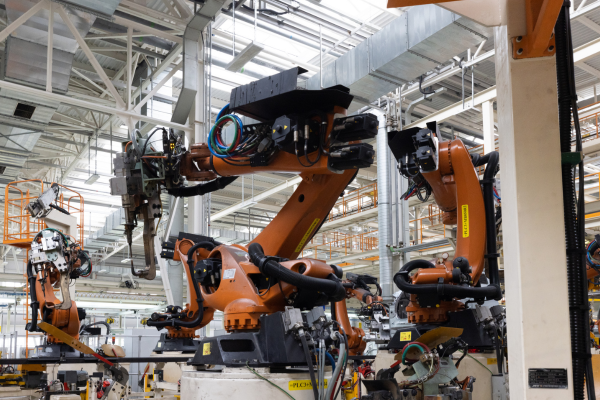Introduction
Deep learning, a branch of machine learning, involves neural networks with multiple layers that can learn and make decisions on their own. This powerful technique mimics the human brain’s ability to process data, recognize patterns, and make predictions. By leveraging large datasets and advanced algorithms, deep learning is making significant progress in diverse fields. But what are the common applications of deep learning in artificial intelligence? Let’s take a look at some of the key areas where this technique is making a huge impact.
Table of Contents
Healthcare and Medical Diagnosis

Medical diagnosis and healthcare are two of the most exciting areas in which deep learning is being used in artificial intelligence. With great accuracy, deep learning algorithms can identify diseases by analyzing medical images such as CT, MRI, and X-rays. For example, computer techniques can often outperform human radiologists in identifying early signs of neurological diseases, cancer, and heart disease. Deep learning is also revolutionizing the healthcare sector by helping to identify new medicines, optimize treatment strategies, and predict patient outcomes.
Autonomous Vehicles and Transportation
The development of modern transportation systems and driverless cars is heavily dependent on deep learning. Deep learning algorithms are used by self-driving cars to evaluate data from cameras, sensors, and GPS to traverse routes, avoid hazards, and make decisions about their course in real-time. This technology opens the door to smarter, more effective transportation networks while improving vehicle safety and reducing traffic congestion.
Natural Language Processing
Deep learning has a major use in natural language processing (NLP) in artificial intelligence. Thanks to NLP, machines can now understand, interpret, and produce human language. This technology underpins sentiment analysis tools, automated language translation services, and virtual assistants such as Alexa and Siri. Large amounts of text data can be analyzed using deep learning models, which can then be used to create human-like language, accurately translate content, and even identify emotions in written material.
Computer Vision and Image Recognition
Deep learning plays a major role in computer vision, the subject that allows machines to analyze and understand visual data. Systems use this technology to classify images, perform object recognition, and face recognition. For example, security systems use deep learning for threat identification and monitoring, while social media sites use it to tag users in images. In addition, deep learning is fueling growth in virtual reality (VR) and augmented reality (AR) applications, providing immersive experiences to consumers.
Financial Services and Fraud Detection
Deep learning is being used by the banking industry to enhance security and improve a range of services. To protect financial systems from fraud, deep learning algorithms check transaction data. In addition, risk assessment, credit ratings, and customized financial advice are all performed using this technology. Deep learning helps organizations make intelligent decisions and provide better services to their customers by analyzing vast amounts of financial data.
Entertainment and Content Creation
Deep learning is revolutionizing the entertainment sector, as it makes it possible to create customized content and improve user experience. Deep learning is used by streaming services such as Netflix and Spotify to create personalized song, movie, and show recommendations based on customer preferences. In addition, this technology is used in the creation of music, realistic animations, and special effects for motion pictures. The creation of sophisticated gaming AI, which increases the level of difficulty and engagement of games, is also powered by deep learning.
Robotics and Industrial Automation

Deep learning is driving major advancements in robotics and industrial automation. Robots with deep learning skills are able to complete difficult tasks in an accurate and adaptive manner. Predictive maintenance, production process optimization, and quality control are some of the uses of this technology in manufacturing. Robots can learn from their surroundings thanks to deep learning, which gradually improves their performance and increases overall operational efficiency.
Education and e-learning
In e-learning and education, deep learning is also becoming more and more popular. Deep learning is used by intelligent tutoring systems to provide personalized learning experiences that adjust to each student’s needs and level of development. This technology can provide personalized instructional content, assess tasks, and provide feedback. Deep learning helps teachers identify areas in which students need more help and helps create focused interventions by evaluating student data.
Environmental Monitoring and Agriculture
Both sustainable agriculture and environmental monitoring benefit from deep learning. Deep learning models are used in environmental research to follow animals, monitor deforestation, and forecast natural disasters through the analysis of satellite photos. This technology is used in agriculture to estimate productivity, identify pests, and monitor crops. Deep learning helps farmers ensure sustainable food production by providing practical insights that help them optimize their operations.
Conclusion
In summary, deep learning is a revolutionary technology that has widespread use in artificial intelligence. In various fields, including healthcare, autonomous cars, natural language processing, and environmental monitoring, deep learning is driving innovation and increasing productivity. We can look forward to even more revolutionary uses of this technology, which will impact the future of AI as well as our daily lives.
- You might be interested in reading these posts as well
- Which machine learning algorithms uses both labeled and unlabeled data for training?
- What is Deep Learning and its Applications?
- Is deep learning harder than machine learning?
FAQs
A subfield of machine learning called “deep learning” makes use of multi-layered neural networks. These networks are able to make intelligent decisions by learning from vast amounts of data.
Deep learning is used in drug development, disease diagnosis, personalized treatment regimes, and medical image analysis.
Self-driving cars use deep learning algorithms to evaluate data from sensors and cameras to navigate roads, avoid obstacles, and make decisions about driving in real-time.
Deep learning empowers sentiment analysis tools, language translation services, and virtual assistants by enabling machines to understand and produce human language.
Deep learning is used in finance for risk assessment, credit scoring, fraud detection, and providing personalized financial advice.